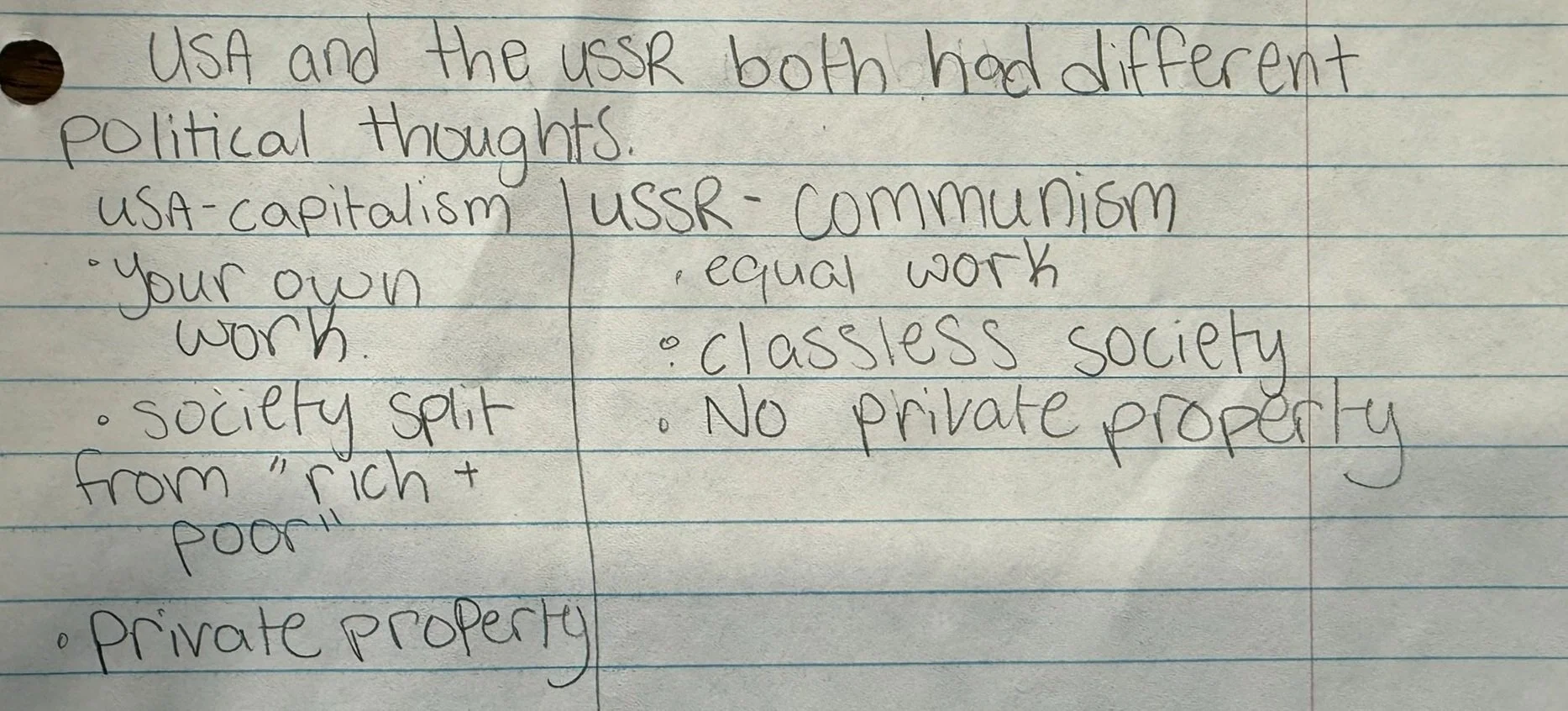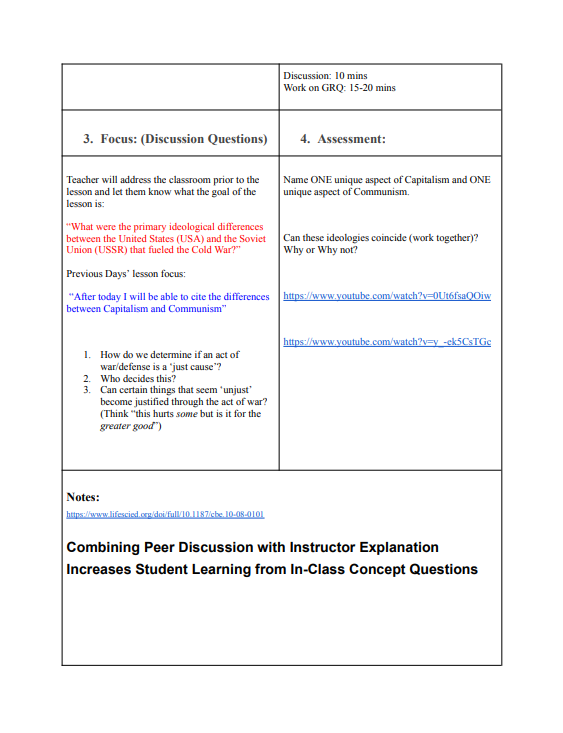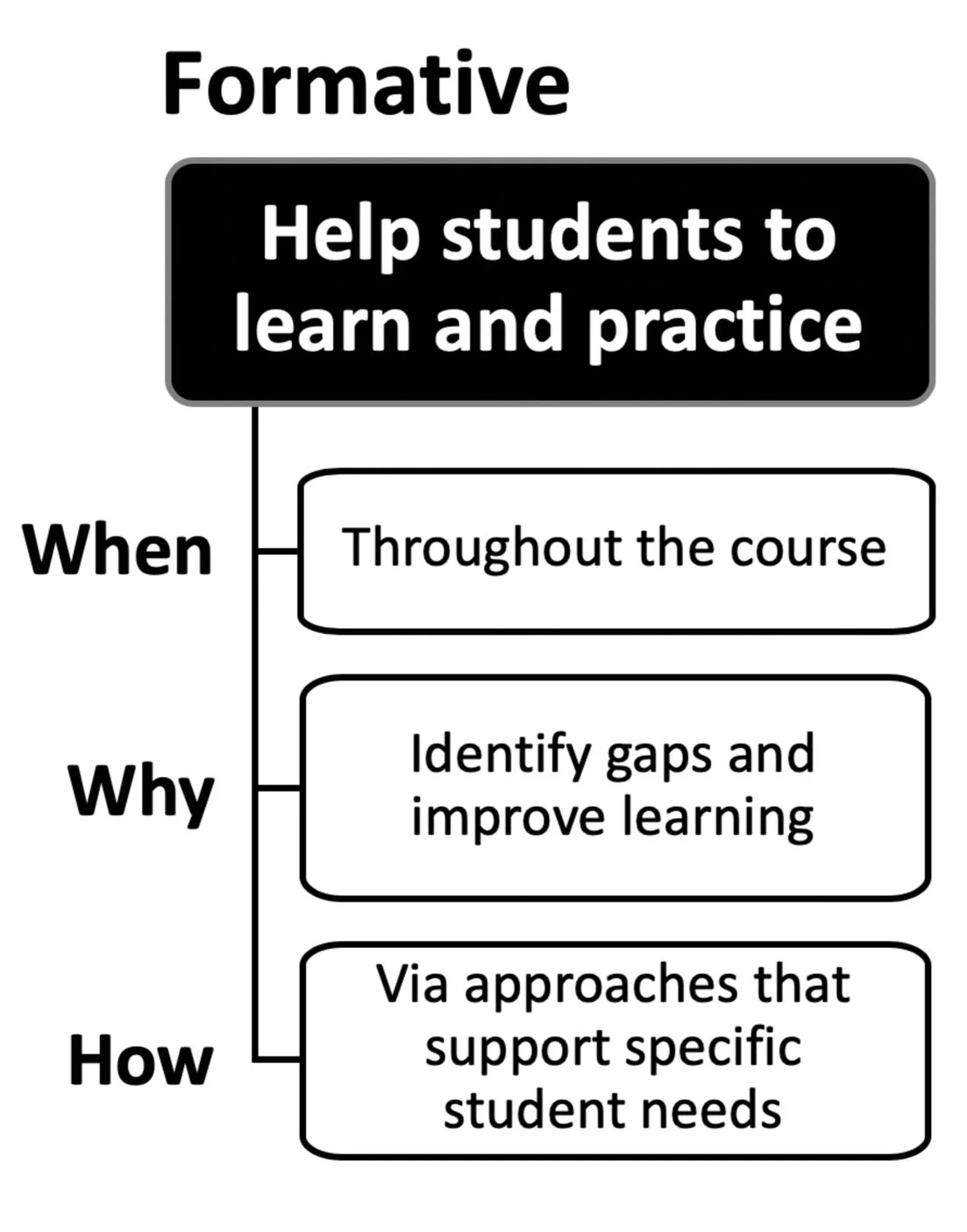Checking Student Understanding During and at the Conclusion of Lessons (FA)
Formative assessment is a core teaching practice that allows the teacher for the students to tell them where they are at individually on a specific topic regarding the learning goal or target that the teacher has set for them. Formative assessments do not have to be something that is graded and often come in the form of an exit slip or single question as that is the easiest way to directly correlate their answer to the specific learning goal of the day or unit.
For this example, I was teaching a unit on The Cold War. The formative assessment form that I chose to use was an ‘exit slip’ that asked, “What were the primary ideological differences that fueled the cold war”
I broke down this question throughout the lesson and at the end before giving the exit slip. The students were allotted ten minutes to complete the slip with any remaining time given to completing the assignment that was due within the upcoming class periods.
Using this formative assessment, I was able to use the assessment to determine where each student was at individually and then address the misconceptions in the following lecture whether they were noticed in a pattern of many students or just one or two.
This allows the students to reach their teacher and tell them what they know (and more importantly) do not know, so the lesson can continue to function as intended.
An example of a formative assessment that would not be overall beneficial to the classroom would be one that is very vague, open ended, or one that simply ALL of the students would understand and give the exact same answer to.
One example is an FA I gave in November that simply asked the students to,
“write either a formal definition of the word, “dystopia” or provide three bullet points of what it means to them or give examples that they understanding of the concept.”
I thought this was beneficial as I would be able to determine if they knew what a dystopia was as it greatly related to the novel, 1984, but it was too open ended. All of the students that gave a formal definition were spot on, so I was not able to make any inferences or groupings based on these responses —they all knew. The few students who did not give a formal definition gave emotions and examples, which was allowed in the question, but after closer review those responses proved useless as I understood what they meant or where they were coming from but was not able to assess anything beyond that.
Lesson Plan:
-
Formative assessment allows the teacher to receive immediate feedback from the students on both an individual and classwide basis. This allows the teacher to change the course of the lesson to help the students better understand the goal of the lesson or gives them reassurance that their students understand the lesson.
-
If the formative assessment is tied directly to the learning goal and you are also transparent with the students on what the learning goal of the lesson is — you can directly ask them to define the learning goal or answer a question tied to it in their own words. This allows you to see the students’ thinking in relation to the lesson. You can also ask them to answer questions that are very similar to it.
-
Any time! They are used simply to gage where your students are at, so the more they are used the more the teacher can closely follow the students’ thought processes. Since this should be the goal, they should be used as often as applicable.







